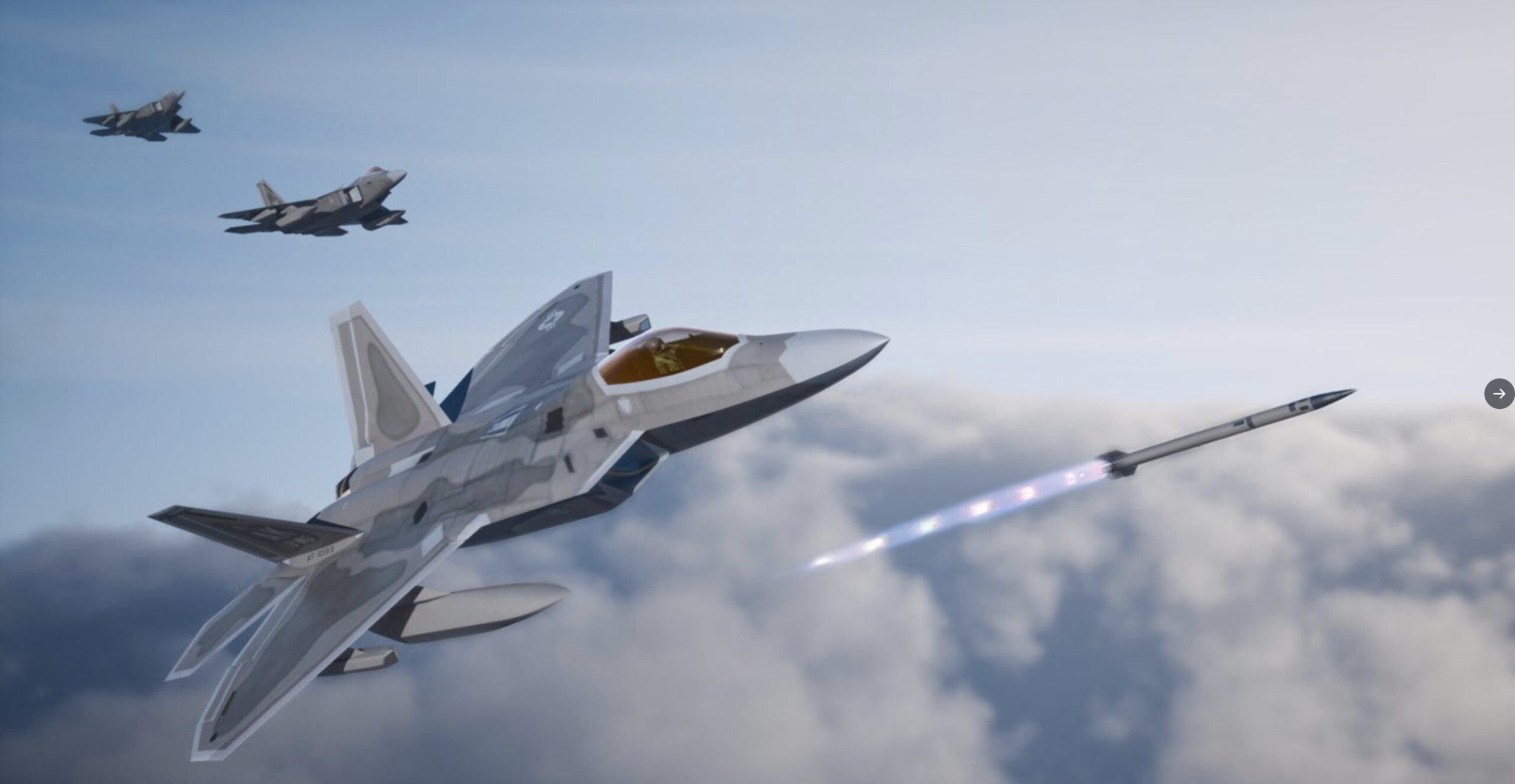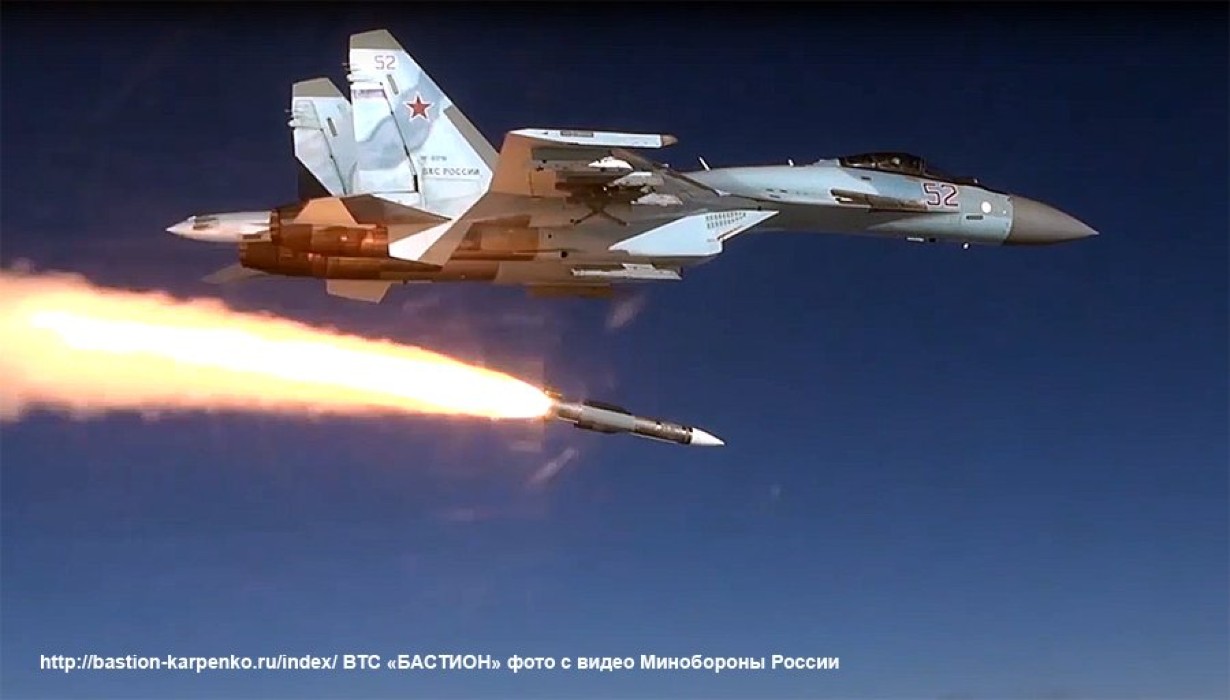Major military powers are investing in the development of very long-range air-to-air missiles for beyond visual range combat. The US is working on the AIM-260, China is developing the PL-17 and PL-21, and Russia is further enhancing its existing long-range munitions.
The US Air Force (USAF) and US Navy have, for the first time, publicly requested $670.5 million in funding for the acquisition of the classified air-to-air AIM-260 Joint Advanced Tactical Missile (JATM) in the fiscal 2026 budget request that was released on June 26. They have also requested $687 million for the continued development of the missile.
Regarding acquisition, the Air Force is requesting $368.593 million for the AIM-260A, while the Navy is requesting $301.858 million. Additionally, the Air Force and Navy have requested $425,029 and $222,782, respectively, for JATM’s research and development.
Although there is a paucity of details about the classified missile, we know it is being developed as a successor to the AIM-120 Advanced Medium-Range Air-to-Air Missile (AMRAAM). Reports suggest that the missile is already being tested in secrecy.
There are speculations that it will be powered by ramjets or dual-pulse rocket motors to enhance the missile’s performance and range.
Additionally, experts and military observers surmise that the AIM-260 will potentially feature an advanced multi-mode seeker system, possibly incorporating infrared imaging and active radar capabilities.
They assert that with this dual-seeker design, the missile’s accuracy and resistance to electronic warfare countermeasures would both be greatly increased. Moreover, it would make it easier to engage stealthy targets with little radar footprints.
The AIM-260 is expected to contain a two-way datalink, similar to the latest AIM-120D-3 AMRAAM variant. The missile’s effectiveness would be further increased by this feature, which would enable mid-course targeting updates or re-targeting.
In 2022, General Mark Kelly, the former head of the United States Air Force’s Air Combat Command, shared an artist’s concept of the Lockheed Martin F-22 firing an AIM-260 JATM.
It is indicated that the missile will initially be equipped on the F-22 Raptor. However, analysts believe that it will eventually be adopted by the F-15EX and F-35 Lightning II.
In February 2025, the US Navy publicly revealed the rendering of the next-generation long-range AIM-260, providing much greater detail of the missile’s exterior and guidance section, as covered in depth by the EurAsian Times.

Notably, the primary goal of the new AIM-260 would be to outrange Chinese missiles. In fact, the emergence of the Chinese long-range PL-15 missile in 2016 spurred the development of the AIM-260. In addition to the AIM-260, the US has also developed the AIM-174B, derived from the SM-6 missile.
Escalating tensions in at least two significant hotspots in the Indo-Pacific—the South China Sea and the Taiwan Strait—have enhanced the possibility of conflict between the United States and China. Analysts contend that the US Navy’s advanced, long-range air-to-air missiles could potentially neutralize China’s aerial dominance. This development is part of an increasing focus on power projection in response to heightened regional tensions.
The recent claims made by Pakistan of downing three Rafale fighters in the latest Indo-Pakistan conflict using the export variant of the PL-15 may have further expedited the effort for the development of AIM-260.
The AIM-260 beyond visual-range missile would be crucial in a potential combat with the Chinese PLAAF, as it would enable US fighter jets to destroy high-value assets, such as the adversary’s AEW&C aircraft and refueling tankers.
It is also pertinent to note that modern BVR long-range missiles, such as the AIM-260, are designed to counter stealth aircraft and operate in contested environments with heavy electronic jamming, thereby ensuring effectiveness against advanced adversaries.
Meanwhile, China has already moved past the long-range PL-15. It is now developing missiles wielding a significantly longer range, including the PL-17 and the futuristic PL-21.
China Acing The Long-Range AAM Race?
The People’s Liberation Army (PLA) is developing very long-range air-to-air missiles (VLRAAM) that can strike targets from far distances. A previous US Department of Defence (DoD) report stated that China already has the PL-17 VLRAAM and is working on a more advanced long-range missile, PL-XX or PL-21.
It stated that China was “exploring dual-mode guidance capabilities, which use both active radar and infrared homing seekers that improve target-selection capabilities and make the missiles more resistant to countermeasures.”
An image claimed to be taken from official state-run military publicity material was shared on social media, showing the PL-17 mounted on a J-16 fighter. With a range of about 400 kilometres, the PL-17 is one of the most far-reaching air-to-air missiles (AAMs) in the world, at least more so than any known AAMs in the US inventory. It has a significantly longer range than the PL-15, which the Pentagon was trying to challenge with the AIM-260.
これはすごい。
PL-17 x1 射程300〜400km程度
PL-15 x4 射程200km以上
PL-12 x1 射程70km
PL-10 x4 射程15〜20km程度
以上の各種AAM 10発を装備したJ-16戦闘機。
PL-15が全長3996mm、直径203mmですからPL-17の大きさがよく分かります。
比較するにPL-17は全長は5m後半程度はあるでしょう。 pic.twitter.com/tgCW9cPTFP— お砂糖wsnbn (@sugar_wsnbn) December 2, 2023
The PL-17 would arm the People’s Liberation Army Air Force (PLAAF) and People’s Liberation Army Navy (PLAN) fighter jets with an incredible tactical advantage, consistent with its anti-access/area-denial (A2/AD) doctrine, as previously explained in detail by the EurAsian Times.
The missile is likely to be launched at targets that the sensors of Chinese fighters can’t even detect. During the flight, PL-17 would likely rely on inertial guidance, satellite navigation, and data link to track targets.
Writing for EurAsian Times, Indian Air Force veteran Air Marshal Anil Chopra (retd) earlier theorised: “A passive sensor may also be designed to detect radar emissions from aircraft such as the Boeing E-3D or E-7A Wedgetail AEW&C platforms from a considerable range. The active seeker would be used for terminal guidance. The PL-17 may also receive target-location updates from off-board sensors for much of the missile flight, making it difficult for the aircraft under attack to know that it is being targeted.”
China is developing another missile, known as the PL-21. It is believed to be an advanced, long-range air-to-air missile designed to target high-value airborne assets and enhance China’s anti-access/area denial (A2/AD) capabilities, much like the PL-17.
However, the PL-21 is an active AESA radar-guided VLRAAM estimated to have a range of 300-400 kilometers. Some sources even claim that it could have a range of 300-800 kilometers — a claim that cannot be verified due to a lack of official details.
However, the range of this missile suggests that it aligns with China’s strategy to counter the US and its allies in the Pacific theater, particularly in a potential conflict over Taiwan.
Notably, the Chinese PL-17 probably rivals or exceeds the range of the Russian long-range missile, R-37M, which is one of the fastest and longest-range air-to-air missiles in active service.
Russia’s Long-Range Missile Capability Is Expanding
The Russians have excelled in the development of BVR missiles, with their Vympel R-37M “Axehead” very-long-range air-to-air missile serving as a spectacular example. Propelled by a boost-sustained solid rocket, this variant is designed to shoot down tankers, AEW&C aircraft, and other C4ISTAR aircraft.
An evolution of the Cold War-era R-37, the R-37M is optimized for modern air combat, particularly in contested environments. The latest variant of the R-37M missile can hit targets at ranges between 150–400 kilometres and has been used extensively in the Ukraine War.
In fact, it has been responsible for keeping Ukrainian fighters away as it can engage targets at standoff distances and disrupt of enemy’s command and control.

While it was primarily developed for the MiG-31 Foxhound heavy interceptor, it was later integrated into the Su-30SM and Su-35S Flanker multirole fighters, as well as the Su-57 stealth fighter.
A dual-pulse solid-propellant rocket motor powers it, accelerating it in the direction of its target as the launch aircraft provides mid-course updates. It has been reported that this missile features an onboard dual-band active radar seeker that can latch onto a target at a distance of 25 miles (40 kilometers) or more, with a radar cross-section of 54 square feet during the terminal phase of the engagement.
While much is already known about the missile, there is speculation that it will be equipped with a nuclear-tipped air-to-air missile, based on a recent report from the US Defense Intelligence Agency (DIA).
Although EurAsian Times cannot confirm these claims, the DIA report does not mention a specific new weapon. It mentions new capabilities, without naming or describing any particular missile.
The DIA report likely alludes to the operationalization of an existing capability rather than the deployment of a new missile. An Indian Air Force veteran and an avid commentator reckoned that it could be the R-33, another long-range missile, instead.
“Russia has likely assigned a nuclear role to the R-33 air-to-air missile—first fielded in the 1980s—as a response to evolving threats such as the B-21 stealth bomber, which may be immune to conventional interception methods,” he reasoned in a EurAsian Times article that can be read here.



